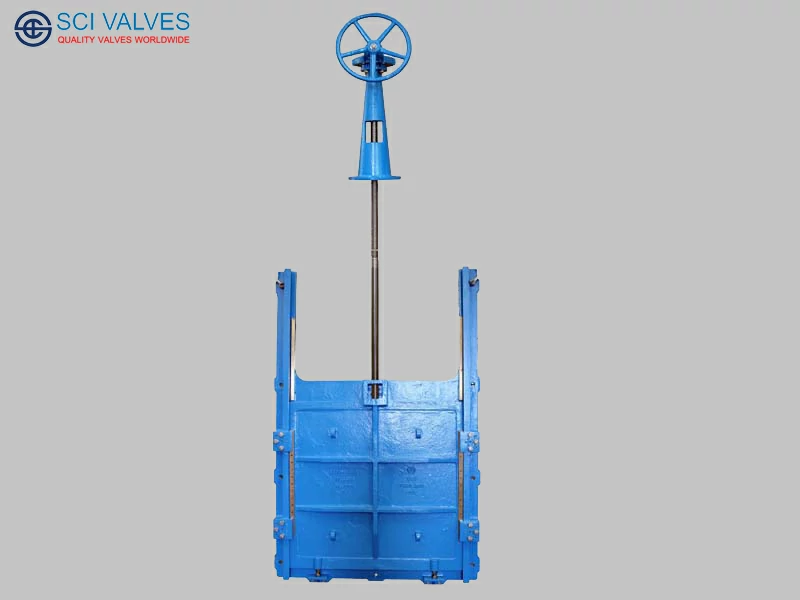Sluice Gate Penstock
Design Features
1. Simple Installation
2. Reduced Operation Torque
3. Material
3.1 Fabricated Stainless Steel
3.2 Ductile Iron
3.3 Cast Iron
3.4 Fabricated Steel
4. Meet the requirement of AWWA C-501 : 1992 , BS 7775 : 1995
Parts Features
1.Frames and Gates
Materials are in high duty cast iron constructed with substantial ribbing for resistance to deflection. Frames connection are flat back or spigot type for extending into concrete, spigot end type provide extra stiffening to the frame. As for circular and rectangular penstocks, flanges connection are also avaiable on reguest, These types of connection are used to enable bolting installation to flange inlet pipe and wall thimble installation. On each side of thae frame, guide channels are provided for the gate and extended to a sufficient height to ensure that the gate is supported over not less than twothirds of its depth when at maximum lift.
These consist normally of bronze seating strips of heavy rectangular sections pinned to machined surfaces on body and gate which are then ground in together to a watertight bearing. Bronze strips are also fitted as bearing surfaces in the guides into which the gate lifts.For sea-water or sewage, aluminium bronze is used or alternatively stainless steel.
3.Wedges
On each side of the frame are cast iron cover bars extending vertically down with adjustable block for limiting the downward movement of the gate. These where tight closure is required and when under pressure forcing the gate away from the frame, additional top and bottom wedges are provided. When strong support is required due to heavy loading, top wedging is a cast iron wedge bar spanning the gate, having taper faces against which the gate wedges work. The number of wedges provided varies according to the size and shape of the penstock and the pressure conditions.
4.Stems
Both rising and non-rising stem construction are available. In the non-rising form the operating threads engage a tapped lifting nut housed between lugs at the head of the gate, the gate itself being cast with a barrel to accommodate the projection of the stem at open positions. In the rising type, the stem is bolted to the stem nut and has the operating thread at the upper end where it engages a revolving nut in the actuator. All stems are suitable sized for duty and furnished with machine-cut thread of stub acme form. High grade materials appropriate to the service requirements are used, the selection of which is based on such factors as the nature of the fluid to be handled, the operating load, the distance from gate to actuator, etc. aluminium bronze and stainless are alternatives and regularly employed.

